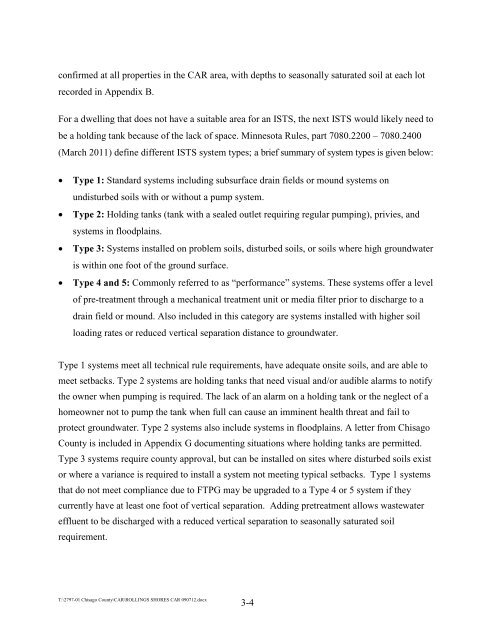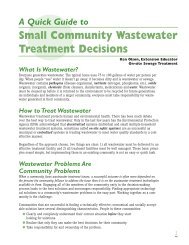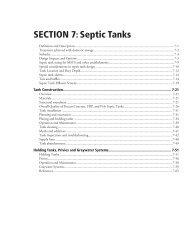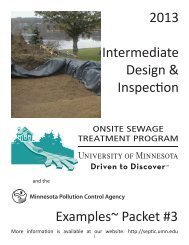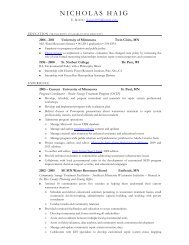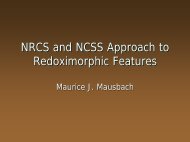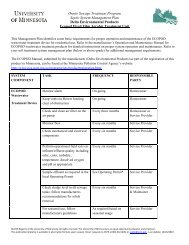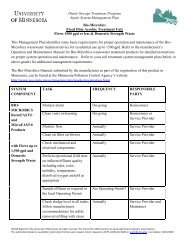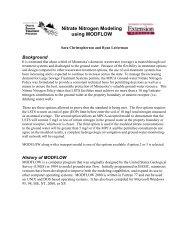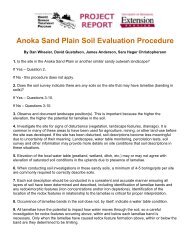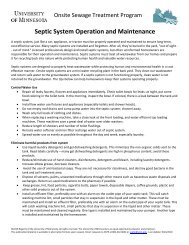Community Assessment Report - Onsite Sewage Treatment ...
Community Assessment Report - Onsite Sewage Treatment ...
Community Assessment Report - Onsite Sewage Treatment ...
You also want an ePaper? Increase the reach of your titles
YUMPU automatically turns print PDFs into web optimized ePapers that Google loves.
confirmed at all properties in the CAR area, with depths to seasonally saturated soil at each lotrecorded in Appendix B.For a dwelling that does not have a suitable area for an ISTS, the next ISTS would likely need tobe a holding tank because of the lack of space. Minnesota Rules, part 7080.2200 – 7080.2400(March 2011) define different ISTS system types; a brief summary of system types is given below:• Type 1: Standard systems including subsurface drain fields or mound systems onundisturbed soils with or without a pump system.• Type 2: Holding tanks (tank with a sealed outlet requiring regular pumping), privies, andsystems in floodplains.• Type 3: Systems installed on problem soils, disturbed soils, or soils where high groundwateris within one foot of the ground surface.• Type 4 and 5: Commonly referred to as “performance” systems. These systems offer a levelof pre-treatment through a mechanical treatment unit or media filter prior to discharge to adrain field or mound. Also included in this category are systems installed with higher soilloading rates or reduced vertical separation distance to groundwater.Type 1 systems meet all technical rule requirements, have adequate onsite soils, and are able tomeet setbacks. Type 2 systems are holding tanks that need visual and/or audible alarms to notifythe owner when pumping is required. The lack of an alarm on a holding tank or the neglect of ahomeowner not to pump the tank when full can cause an imminent health threat and fail toprotect groundwater. Type 2 systems also include systems in floodplains. A letter from ChisagoCounty is included in Appendix G documenting situations where holding tanks are permitted.Type 3 systems require county approval, but can be installed on sites where disturbed soils existor where a variance is required to install a system not meeting typical setbacks. Type 1 systemsthat do not meet compliance due to FTPG may be upgraded to a Type 4 or 5 system if theycurrently have at least one foot of vertical separation. Adding pretreatment allows wastewatereffluent to be discharged with a reduced vertical separation to seasonally saturated soilrequirement.T:\2797-01 Chisago County\CAR\ROLLINGS SHORES CAR 090712.docx3-4


